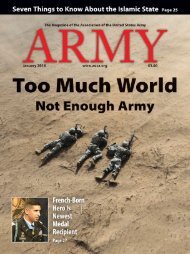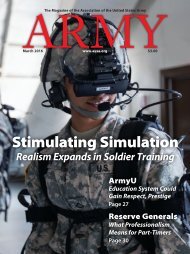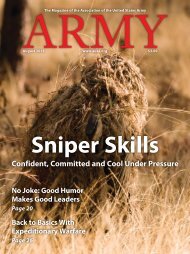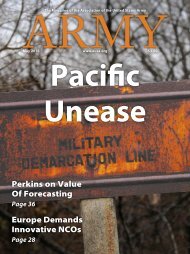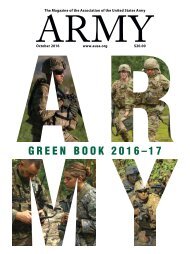All About - History - Nero - Rome's Deadliest tyrant
All About History offers a energizing and entertaining alternative to the academic style of existing titles. The key focus of All About History is to tell the wonderful, fascinating and engrossing stories that make up the world’s history.
All About History offers a energizing and entertaining alternative to the academic style of existing titles. The key focus of All About History is to tell the wonderful, fascinating and engrossing stories that make up the world’s history.
Create successful ePaper yourself
Turn your PDF publications into a flip-book with our unique Google optimized e-Paper software.
Artists in Arms<br />
Picasso’s Guernica<br />
toured the world in<br />
order to raise funds<br />
for the Republicans.<br />
The painting has since<br />
been returned to Spain<br />
Author<br />
Bio<br />
PETER MONTEATH<br />
Peter Monteath<br />
is from Brisbane,<br />
Australia, and was<br />
educated in both<br />
Australia and Germany.<br />
He has published widely on<br />
international responses to the<br />
Spanish Civil War. Currently he is<br />
Professor of <strong>History</strong> at Flinders<br />
University in Adelaide.<br />
Trouble had been brewing in Spain<br />
throughout the first half of 1936.<br />
Elections held in February had brought<br />
to power a left-wing government<br />
committed to reforms, which threatened<br />
the interests of the privileged.<br />
A group of reactionary army officers decided that<br />
the best way to avert that threat was to overthrow<br />
the government. One of the plotters, destined<br />
to become their leader, was General Francisco<br />
Franco. He and others prepared what they called<br />
a pronunciamiento, a pronouncement. In a short,<br />
sharp display of force, the military would simply<br />
‘pronounce’ that the Republican government was<br />
deposed and the military had taken over.<br />
That, at least, was the plan. However, when the<br />
government and large sections of the Spanish<br />
population resisted the coup when it was launched<br />
on 17 July, it became clear that the generals had<br />
failed. They could claim control over parts of Spain,<br />
but the Republican government had survived to<br />
rule over the rest.<br />
So began a bloody civil war that would<br />
ultimately cost some half a million Spanish lives. In<br />
its origins it was Spanish, and it was fought entirely<br />
on Spanish soil, but it was also a war that caught<br />
the world’s attention. Across the globe it seemed<br />
that the great ideological battles of the day were<br />
being fought out on the battlefields of the Spanish<br />
Civil War.<br />
Whether they were in Spain or elsewhere,<br />
writers and artists could not remain untouched by<br />
the dramatic events that unfolded on the Iberian<br />
peninsula. Some of them felt so passionately that<br />
they took up arms, joining such organisations as<br />
the International Brigades to defend the Republic.<br />
Others chose to use their artistic and literary<br />
talents as weapons in the service of a cause. They<br />
hoped that their words and images could make<br />
a real difference to the outcome of the war. For<br />
the great majority of them, that meant crushing<br />
the generals and defeating fascism. More than<br />
that, it was the fervent belief of many that art and<br />
literature could promote fundamental political and<br />
social change in Spain – perhaps even revolution.<br />
53




